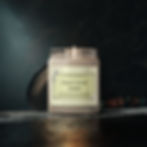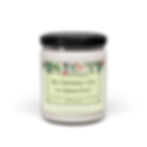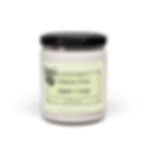How to Cook for Someone Who Is Gluten Free
- Alice von Simson
- Apr 8
- 4 min read
So you’ve invited someone over for dinner and they casually mention they’re gluten free. Maybe they have celiac disease. Maybe it’s a serious gluten intolerance. Maybe gluten just makes them feel like a puffy, bloated mess. Whatever the reason, you’re now entering the gluten-free kitchen zone—where crumbs can be deadly, cross-contamination is a buzzkill, and gluten hides in every corner.
But don’t panic! We’re here to walk you through how to cook for someone who is gluten free without stress, drama, or accidentally causing intestinal sabotage.

First, What Is Gluten (And Why So Serious?)
Gluten is a protein found in wheat, barley, and rye—and it’s sneaky. It shows up in everything from soy sauce to soup to your “all-natural” seasoning blends.
For people with celiac disease, ingesting even a microscopic amount of gluten—less than 1/64th of a teaspoon—can trigger a serious autoimmune response. This isn’t just an “oops, I’m bloated” situation. It’s gut damage, intense inflammation, and, over time, major health risks, including:
Chronic malnutrition
Neurological issues
Fertility problems
Osteoporosis
And yes… increased risk of intestinal cancers
That’s why cooking safely for a gluten free guest (especially someone with celiac disease) is about way more than just swapping the pasta.
Step One: ASK ABOUT THEIR SENSITIVITY LEVEL
Before you bust out your gluten free hero cape, the first and most respectful thing you can do is simply ask them how sensitive they are.
Some gluten free folks can tolerate trace amounts (like cross-contamination in a shared fryer), while for celiacs, even a crumb can cause days of pain and long-term damage to their small intestine.
So ask questions like:
“Do I need to worry about cross-contamination?”
“Are there specific products or ingredients you avoid?”
“Would you prefer to bring your own dish or help me with safe options?”
Trust me—they’ll appreciate the care. It’s way better than assuming and accidentally causing a gluten disaster.
Cross-Contamination: The Tiny, Invisible Threat
Here’s the thing: it’s not just about ingredients. It’s also about your kitchen setup. If you use gluten free pasta but cook it in the same pot that boiled wheat noodles last night? That’s a no-go. Even invisible residue can be a threat. So start by scrubbing anything you are about to use.
Cross-contamination is real, and for many gluten free folks—especially those with celiac—it’s just as bad as eating a slice of bread straight up.

Safe Kitchen Tips to Keep Your Guest Alive (and Impressed)
1. Read Every Ingredient Label
Don’t assume anything is safe. Gluten hides in sauces, spice blends, broth bases, etc.
If it’s not labeled gluten free, look it up. Or text your guest and ask.
2. Ask About Their Specific Needs
Yes, again. Because “gluten free” isn’t one-size-fits-all.
Some folks are fine with certified oats, others aren’t. Some can handle shared fryers, others can't even look at a crouton.
3. Use Non-Porous Cookware
Stainless steel, glass, or silicone are your safest bets.
Avoid wood, plastic, cast iron, nonstick, and anything that’s had gluten stuck to it since 2012. It might feel weird using a metal tablespoon in a mixing bowl but unless your wooden spoon is fresh out of the sawmill, it doesn't belong in their brownie batter.
And for the love of pasta, don’t reuse a gluteny colander.
4. Line Baking Sheets with Parchment or Foil
Don’t trust your crusty old cookie sheet. It remembers.
Use a fresh sheet of parchment paper or foil as a barrier between gluten and freedom.
5. Avoid Convection Ovens
Convection = fan = gluten air tornado.
If your oven isn’t 100% gluten free, turn off the fan setting. You don’t want to cross-pollinate their safe food with the ghost of cookies past.
6. Scrub Like You’re on a Crime Scene Cleanup Crew
Counters, tools, hands, everything.
Use a clean sponge, not the one that’s been wiping up sandwich crumbs all week.
And yes, wipe your phone too if you’ve been Googling recipes mid-cooking. That gluten gets around.
Not Sure What to Make? Keep It Simple.
Fresh meat, veggies, rice, potatoes, and naturally gluten free grains are your best friends.
Gluten Free Baking is a minefield. The flours all have their own agenda and behave like dogs off leash in the oven. Stick with a box mix and save yourself the tears.
Certified gluten free sauces and spices are lifesavers.
Need a shortcut? Grab something certified gluten free from the store, like salad kits, rotisserie chicken, or frozen gluten free lasagna. Trust us, we are used to having to bring our own food, so literally anything you provide will be gratefully received.
Final Thoughts: You Can 100% Do This
Cooking for someone who’s gluten free isn’t hard once you know the rules. You’re not being asked to become a gluten-sniffing food detective (although, that would be a rad job title)—you’re just being asked to care. To clean. To check labels. And maybe to avoid using your bread toaster like a gluten launcher.
And remember: for someone with celiac, this isn’t a diet—it’s medical. Long-term exposure to gluten can lead to irreversible damage and major health issues. So your efforts to make their meal safe? It means everything.
You’re not just cooking. You’re keeping someone healthy, safe, and wildly impressed with your culinary compassion. You are a hero and they won't forget this.









.png)